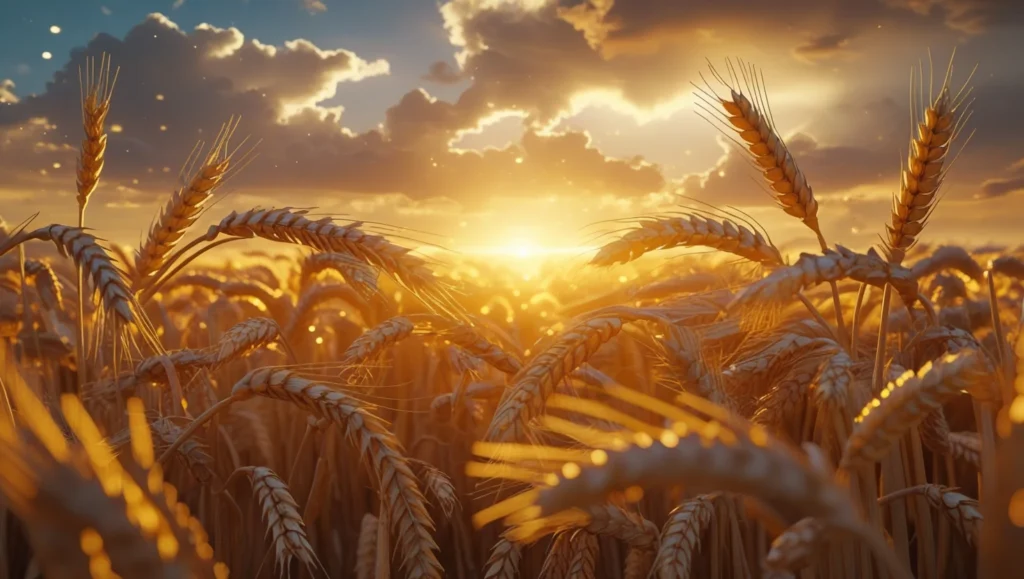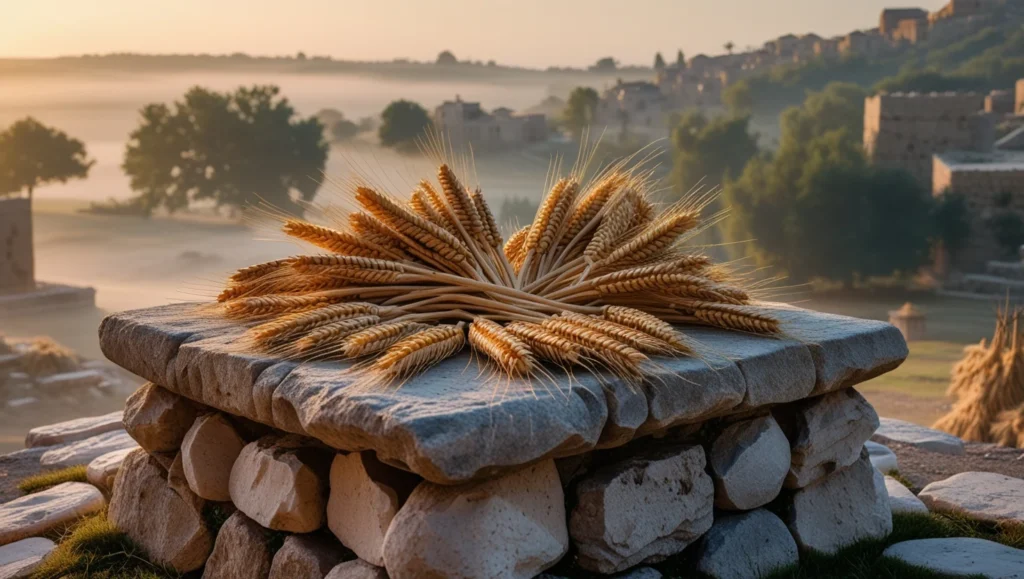Introduction to Sheaves in Biblical Times
What is a sheaf in the Bible? It’s much more than just a bundle of grain! In ancient times, harvesting wheat, barley, and other crops was a way of life, and gathering them into sheaves symbolized not just hard work but deep spiritual truths.
As we explore the meaning of sheaves, you’ll discover how these simple harvest bundles carry powerful lessons about faith, provision, and God’s blessings. Let’s dive into this beautiful symbol from biblical times and see what it teaches us today.
What Does “Sheaf” Mean in the Bible?
Definition of a Sheaf
A sheaf in the Bible refers to a bundle of grain stalks, like wheat or barley, that are gathered after harvest. This practice symbolized not just the physical produce of the land but also the spiritual offering to God, showing gratitude and trust in His provision.
Etymology and Hebrew Roots of the Word Sheaf
The word for “sheaf” in the Bible is “omer” . This term is derived from ancient Hebrew and refers to a bundle of harvested grain, often wheat or barley. The omer was also a specific measure used for grain offerings during the Israelite festivals, symbolizing gratitude and the first fruits of the harvest.
Biblical Verses That Mention Sheaves
- Genesis 37:7 — Joseph’s dream about his sheaf rising above his brothers’ sheaves symbolized his future rise to power and God’s plan for his life.
- Leviticus 23:10–11 — The Israelites were instructed to bring a “wave sheaf” offering to the Lord during the Feast of Firstfruits, marking the beginning of the harvest and acknowledging God’s provision.
Importance of Sheaves in Ancient Israelite Life

Agricultural and Economic Value of Sheaves
In ancient Israel, sheaves were central to survival. They represented the harvest’s yield, which was essential for food. Beyond sustenance, sheaves were offered to God as a form of worship, especially the first fruits, which symbolized the people’s reliance on God’s provision.
Spiritual Lessons from Harvest and Sheaves
The gathering of sheaves taught important spiritual lessons. It emphasized obedience to God’s commands, thanksgiving for His blessings, and the anticipation of future blessings as a result of faithful labor and trust in God’s provision.
Symbolism and Prophetic Meaning of Sheaves in the Bible

Sheaves as a Symbol of Harvest and Blessing
In the Bible, sheaves symbolize the blessings that come from obedience to God. Just as sheaves are gathered at the harvest, blessings are collected as a result of faithful service, hard work, and God’s grace.
Sheaves in Prophecies and Dreams
The image of sheaves also appears in prophecies and dreams. For example, in Joseph’s dream (Genesis 37:7), his sheaf stood tall above his brothers’, symbolizing his future leadership and God’s provision for his family during times of famine.
Sheaves and the Concept of Firstfruits Offerings
In ancient Israel, the first harvested sheaves of grain were offered to God during the Feast of Firstfruits as a symbol of gratitude and acknowledgment of God’s provision. This offering represented the first portion of the harvest, dedicated to God.

The concept of firstfruits finds fulfillment in Jesus Christ, who is referred to as the “firstfruits of the resurrection” (1 Corinthians 15:20), signifying His victory over death and the promise of eternal life for believers.
Lessons Christians Can Learn from Sheaves Today
Faithfulness and Trust During Spiritual Harvest
Just as sheaves were gathered after a period of labor, Christians are reminded to remain faithful and trust in God’s timing during spiritual seasons of growth.
Giving God the First and the Best
The first fruits offering teaches Christians to honor God by giving Him the best of their resources, time, and efforts, symbolizing gratitude and devotion.
Waiting Patiently for God’s Promise (Harvest Season)
Sheaves also remind Christians to wait patiently for God’s promises, trusting that the harvest will come in due season as they continue to live in obedience.
Final Thoughts: Embracing the Biblical Message of Sheaves
As we reflect on the biblical significance of sheaves, we are reminded of the importance of trusting God in every season of our lives. Just as the Israelites offered the firstfruits, we are called to give God our best, patiently waiting for His promises to unfold. Sheaves are a powerful symbol of God’s provision, and through them, we learn to trust Him for our personal harvests, both spiritually and materially.
FAQ
What is the spiritual significance of a sheaf?
The sheaf represents blessings gathered from obedience to God. It symbolizes the offerings made from the first harvest, reflecting trust in God’s provision and dedication to Him.
Where is the sheaf mentioned in the Bible?
Sheaves are mentioned in several Bible verses, such as Genesis 37:7 (Joseph’s dream) and Leviticus 23:10–11 (Wave Sheaf Offering).
What is the meaning of Joseph’s dream about sheaves?
Joseph’s dream of sheaves symbolizes his future leadership, where his sheaf rises above his brothers’ sheaves, indicating God’s plan for him to lead during difficult times.
What is a wave sheaf offering?
A wave sheaf offering is the presentation of the first sheaf of the harvest to God, symbolizing the firstfruits and honoring God’s provision during the Feast of Firstfruits.
How can believers apply the lesson of sheaves today?
Believers can apply the lesson of sheaves by practicing faithfulness, giving God their first and best, and trusting in His promises while waiting for their spiritual harvest.

